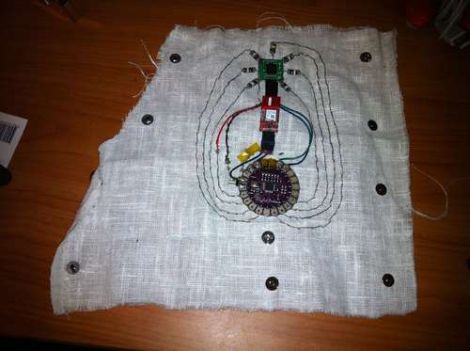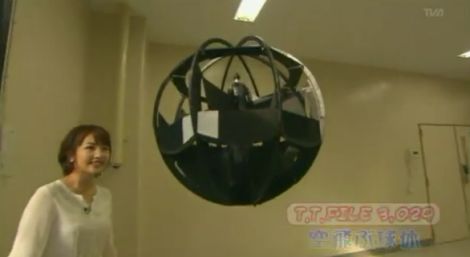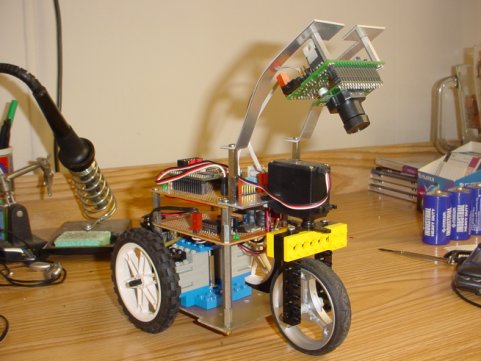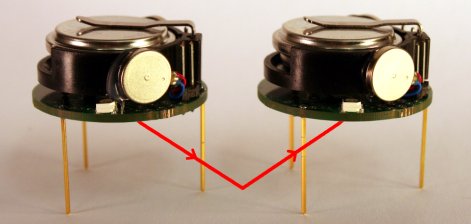It’s neat how a project from 2004 can still be relevant if it’s done really well. This is the case with AVRcam. It uses an Atmel AVR mega8 and can do some pretty impressive things, like track up to eight objects at 30fps. The hardware and software is also open source, so it should be possible to build one yourself. There are many projects like it on the internet, though often they require much beefier hardware. Although, these days you can fit a computer inside a match box, so we see more and more projects just throwing a full USB camera on a robot to do simple things like line following. It’s debatable which solution is more elegant, but maybe not which one is more impressive.
Day: June 10, 2011
Forearm-mounted GPS Uses LEDs To Light The Way Home

While some people can rely solely on memory and landmarks to find their way home, others need a bit more help. Consider Instructables user [_macke_] for instance.
Like other screenless GPS navigation devices we have seen, his “Find Home Detector” uses a GPS module to obtain his location, guiding the way home via a set of alternate indicators. In this case, he uses LEDs which are laid out like a compass rose. When [_macke_] is aimed toward his destination, the LED nearest to his fingertips lights up, letting him know he is on the right path. As he turns away from home, the other LEDs light, indicating the direction in which he should turn.
His forearm-mounted GPS navigator uses a LilyPad Arduino to control the system, much like others we have seen. It is connected to a GPS sensor and a compass module that work in concert to guide him home. The compass is responsible obtaining his heading information, and while it might look as if the LEDs that surround the module are pointing North, they are in fact indicating the heading of his destination instead.
It’s a cool little creation, and we can imagine it would be quite helpful if you happen to be walking home after a long night of drinking.
Be sure to check out the video below for a quick demonstration.
Continue reading “Forearm-mounted GPS Uses LEDs To Light The Way Home”
Spherical Military Drone Coming To A Sky Near You

We’re always fascinated by flying drones around here, and this latest creation by Japan’s Ministry of Defense is no exception. The spherical drone, which looks far simpler than this drone we saw several months back, looks pretty benign at first glance. Once it starts moving however, you can see just how slick it is.
Reports say that it can hit a top speed of 40 mph, but it seems that the fun is relatively short-lived, as the drone runs out of juice after about 8 minutes. While it is flying, the drone appears to be incredibly agile and fairly easy to control. The built-in camera isn’t top end, but it looks more than sufficient for general surveillance use.
While we love quadrocopters and all of the cool acrobatics they pull off, there’s something awesome about a drone that can hit the ground at speed, roll, and take off again without incurring any serious damage.
Anyone care to start work on a civilian prototype with a longer battery life?
Magnetism Makes Silly Putty Fun Again

The image above is a screen capture from a video clip where the black ooze gobbles up that rare-earth magnet. It’s actually a blob of Silly Putty which was slightly altered to add magnetic properties. [Mikeasaurus] grabbed some ferric iron oxide powder from an art supply store and donned gloves and a dust mask while massaging it into the silicone polymer. If you get the right mix of the two materials you end up with a flowing substance that performs mysteriously when exposed to a magnetic field.
Check out the video after the break to see some of the tricks that [Mikeasaurus] can do. The putty really looks like it has a life of its own. It will stretch a remarkable distance to get close to the magnets (amorphous stretch). If left in contact with one it will fully engulf it and then form an orb.
Now, is there any way to use this with electromagnetic fields to build a morphing robot?
Virtual Reality With A Pico Projector
![]()
Although virtual reality was the wave of the future in the early 90’s, it hasn’t really taken off the way we would have liked. Sometimes a great idea just takes time for the technology to catch up to it (Aeolipile anyone?). Now that tiny projectors, realistic FPS games, and eye tracking systems have come down in price, this head-tracking projection system engineered by students at University of Texas at Austin could be the start of something really neat.
Although we’ve seen some cool FPS/pico projector hacks before, most of them use the “gun” as the controller. This approach offers a a different experience as one isn’t required to carry a “gun” around. It simply tracks one’s eye movement and moves the projector automatically. Check out the video after the break to see this device in action. Continue reading “Virtual Reality With A Pico Projector”
Autodesk Enters The Hobby Market
Autodesk aims to enter the hobby market with its offering of Autodesk 123d. If you’ve ever been spoiled by a nice CAD suite like Solidworks, Pro-E, or Inventor it becomes readily apparent that the free offerings don’t come anywhere close. At first Autodesk 123d seems to be entirely a Google Sketchup clone, and in some ways it is. Though, after a bit more exploring, the software offers some pretty advanced features, such as assemblies and constraints . All worries about it being windows only and closed source aside, it’s pretty cool that a big name in the CAD industry is taking a look at the hobby market, and overall it is worth testing out to see if it fits into your toolbox.
Continue reading “Autodesk Enters The Hobby Market”
$14 Swarm Robot, Kilobot, Is Extremely Cool
Reader, [Michael Rubenstein], sent in a project he’s been working on. Kilobot, as stated in the paper(pdf), overcomes the big problems with real world swarm robotics simulations; cost, experiment setup time, and maintenance. The robot can be communicated with wirelessly, charged in bulk, and mass programmed in under a minute. Typically, robots used for swarm research cost over a $100, so large scale experiments are left to software simulation. These, however, rarely include the real world physics, sensor error, and other modifying factors that only arise in a physical robot. Impressively enough, the kilobot comes in far under a hundred and still has many of the features of its costlier brothers. It can sense other robots, report its status, and has full differential steer (achieved, surprisingly, through bristle locomotion). There are a few cool videos of the robot in operation on the project site that are definitely worth a look.














